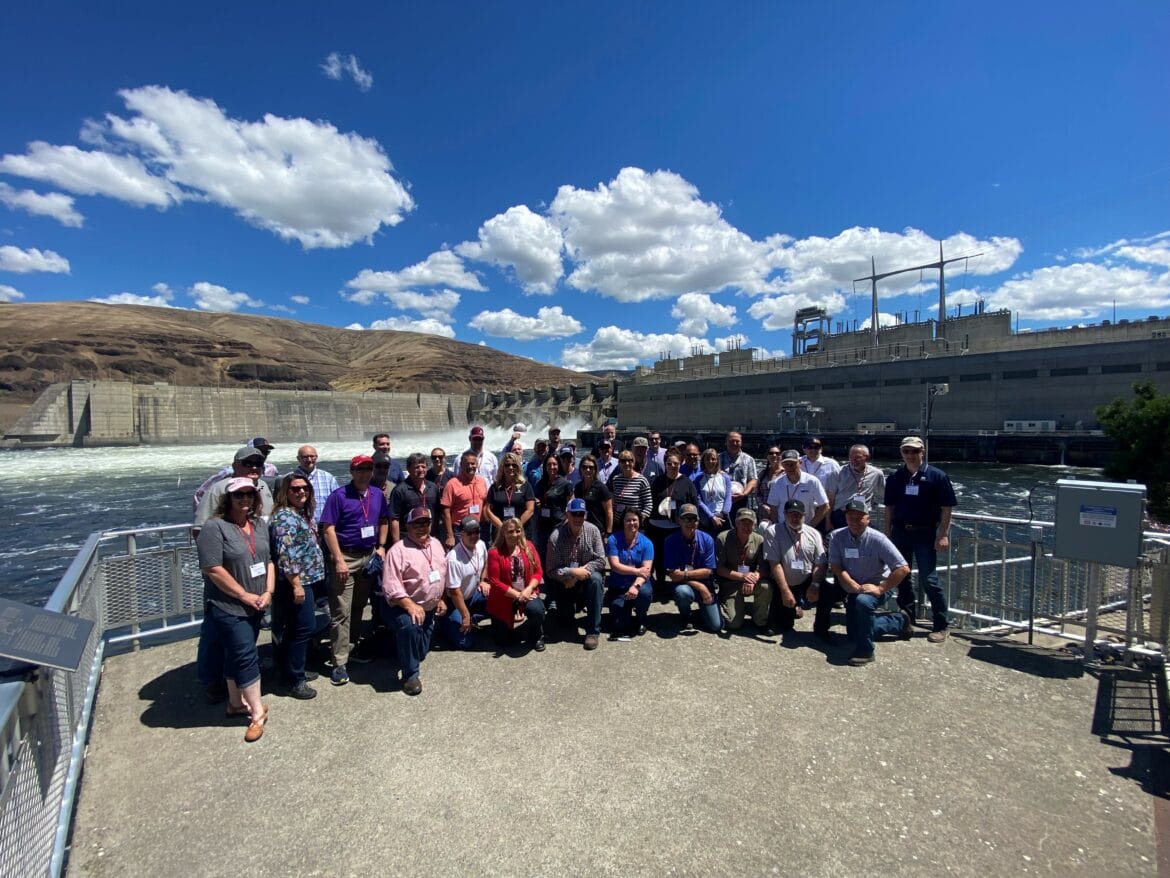Leaders from regional and national agricultural organizations, as well as agribusiness leaders, had the opportunity to learn about the importance of dams to interstate commerce in lower Snake River during a meeting and tour June 15-16 in Lewiston, Idaho.
Montana Farm Bureau Vice President Cyndi Johnson and Montana Grain Growers Association President Mitch Konen, American Farm Bureau President Zippy Duvall, National Wheat Growers CEO Chandler Goule and Columbia Grain International CEO and President Jeff Van Pevenage along with other commodity association leaders, spent two days discussing the lower Snake River Dam System and the detrimental effect breaching the dams would have on the economy of the Pacific Northwest. The event was hosted by the Idaho Farm Bureau and the Idaho Grain Producers Association.
“I didn’t realize how important these dams are to Montana agriculture,” said Johnson. “The commodities from Montana that are shipped via barge on this river include flax and some hard red spring wheat that are in huge demand in the Pacific Rim. Eliminating these dams would have a real impact on Montana’s economy and would really devastate Idaho’s economy.”
Congressman Michael Simpson, R- ID, who serves on the House Appropriation Committee, has developed the idea that by adding $33.5 billion to the Appropriations, a large percentage of that money could be spent on dam elimination. Simpson claims the fish are going extinct, but Johnson, after seeing the dam in operation, said that doesn’t seem to be happening, and admired the work being done to improve populations of the salmon.
“Millions of dollars have been spent on high-tech strategies to accommodate fish heading up and down the river over the last 50 years. The fish are doing better than they have ever with a 98 percent survival rate,” noted Johnson. “That $33.5 billion in appropriations certainly won’t be enough to stop the economic devastation if the dams are removed.”
She explains that after seeing the dams and learning about the success rate of the fish, removal of the dams is a poor idea not only for trade, but for the environment. “We learned that one four-barge tow to take grain down this river uses a quarter of the fuel and causes no pollution compared to the 538 trucks that would be needed to haul that same amount of grain,” Johnson said. In addition, the dams provide clean energy to 1.87 million homes.
“Utilizing the waterways provides for safe, affordable and low-emissions form of transportation for moving commodities to market and consumers benefit with access to high quality grains.” MGGA President Mitch Konen said, “MGGA will continue to work with and support industry leaders in the region to ensure waterways are accessible to move commodities to global markets.”
The participants strongly recommend that the House Appropriations Committee visit the dam to see firsthand that the fish are thriving and how dam removals would greatly harm the economies of the states who rely on the dams.
Although only one percent of Montana grain moves via the Snake River System, should its dams be eliminated, Idaho, Washington and Oregon grain production would suddenly switch to rail transportation, creating bottleneck situations for Montana grain flow. In addition, it would set a dangerous precedent for other dam removals.
In addition to touring the Lower Granite Dam Complex, the group had the opportunity to visit the Port of Lewiston and the Lewis-Clark Terminal.
###
MFBF/MGGA


